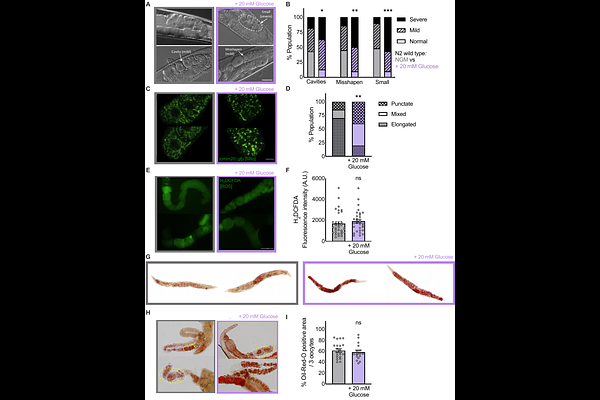Glucose enrichment accelerates C. elegans reproductive aging via non-autonomous DAF-2/insulin-like receptor signaling in somatic tissues

Glucose enrichment accelerates C. elegans reproductive aging via non-autonomous DAF-2/insulin-like receptor signaling in somatic tissues
Athar, F.; Houston, E. J.; Jewett, E.; Templeman, N. M.
AbstractDetrimental effects of chronic high-sugar overconsumption can extend from molecular and cellular responses to systemic changes. Reproductive systems are particularly sensitive to diet and energetic state, yet the long-term reproductive consequences of overnutrition are poorly defined. Here, we used Caenorhabditis elegans to study the impacts of glucose excess on reproductive aging. Glucose supplementation shortens C. elegans lifespan, and we found that it also hastens age-related reproductive decline, evidenced by a greater deterioration in oocyte quality and lower fertility with age. We next evaluated insulin-like signaling contributions, as this glucose-responsive pathway is well known to regulate both somatic aging and reproductive aging. Intriguingly, while 20 mM glucose enrichment still shortens the lifespan of daf-2(e1370) mutants, we found that it had no detrimental impact on their reproductive aging phenotypes. Using auxin-induced tissue-selective degradation, we discovered that DAF-2/insulin-like receptor signaling in C. elegans intestine and body wall musculature is required for glucose enrichment to exert damaging impacts on the reproductive system. However, suppressing insulin-like signaling in either of these tissues is sufficient to protect C. elegans against glucose-induced reproductive aging. These findings suggest that insulin-like signalling in metabolically active somatic tissues may represent a key link between overnutrition and reproductive aging.